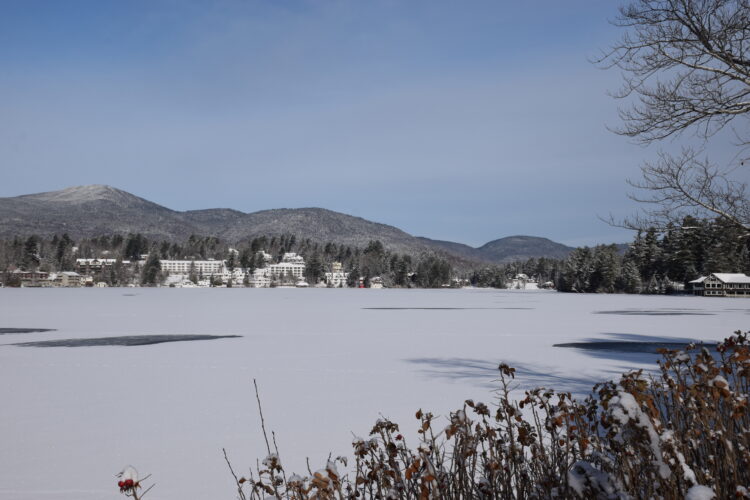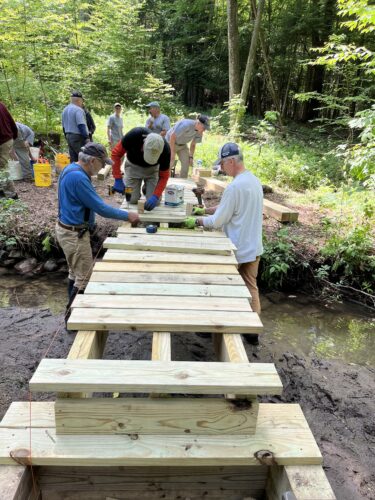Park Agency urged to drop motor-vehicle plan
Adirondack conservation organizations this week said they were pleased that the Adirondack Park Agency (APA) was pausing on a controversial amendment to the Adirondack Park State Land Master Plan that would create an administrative loophole and open remote wilderness areas to motorized vehicles.
The organizations called on the APA to drop that portion of its proposal and instead allow the state Department of Environmental Conservation (DEC) to lead on creating a statewide plan that excludes motor-free official Wilderness Areas.
The amendment is part of a package of recently proposed changes to the master plan, which governs public land management in the Adirondack Park. The proposed amendment would redefine “motor vehicle” to exclude motor vehicles, including cars, trucks and all-terrain vehicles if they are used by people with mobility disabilities.
The proposed change would mark a drastic weakening of the master plan, which has since its adoption in 1972 prohibited all public motor vehicle use on Forest Preserve lands classified as Wilderness Areas. It is opposed by the Adirondack Council, Adirondack Mountain Club, Adirondack Wild/Friends of the Forest Preserve, Adirondack Wilderness Advocates and Protect the Adirondacks! The organizations believe there is a better way to promote access for persons with disabilities, while at the same time protecting the few Wilderness Areas in the Adirondack Park from motorized intrusions.
Currently, powered wheelchairs are already allowed on all portions of the Adirondack Forest Preserve. Wheelchairs may go anywhere that feet are allowed to go.
The APA’s proposed amendment would address outdoor-only mobility devices, referred to as “other power-driven mobility devices” (OPDMDs). Motor Vehicle access is currently allowed for persons with disabilities in some “forever wild” Forest Preserve land classifications with a special DEC-issued permit under its CP-3 program. The program does not allow such vehicles in Wilderness, Primitive, and Canoe Areas. OPDMDs include golf carts, e-bikes, ATVs, UTVs, and trucks. Under the APA’s proposed amendment, these devices would be exempt from the master plan’s current definition of “motor vehicle,” thus lifting the ban on their use in Wilderness, Primitive, and Canoe Areas.
The organizations oppose the proposed amendment because it directly contravenes the master plan’s definition of Wilderness Areas and will permanently alter the Forest Preserve landscape and its ecologies. The APA has previously classified all of the potentially affected lands as being too sensitive for motorized recreation.
The Adirondack Park is a globally significant resource, representing one of the largest and most intact temperate forests left in the world. With wilderness areas making up only 3.3 percent of New York’s land, these protections are essential to preserving not only the ecological health of the region but also its cultural and recreational value, the organizations said.
The Americans with Disabilities Act allows for a balanced approach, recognizing the unique and sensitive qualities of Wilderness Areas. It exempts federally designated Wilderness Areas and allows states the flexibility to protect state-designed Wilderness Areas while expanding access elsewhere.
The organizations call on APA to withdraw the OPDMD amendment to the definition of “motor vehicle” and instead focus on collaborative solutions that both improve access and uphold the agency’s conservation mandate.
The organizations also urged the DEC to continue to lead in developing a statewide OPDMD policy.
Federal guidelines allow states to develop OPDMD policies, including limitations on where these devices can or cannot go, their weight, noise and size. In addition, federally designated Wilderness Areas – upon which the definition of Wilderness in the master plan is based — do not allow OPDMDs.
“We believe that with thoughtful policy-making and inclusive dialogue, we can find a solution that both improves access and protects the integrity of these irreplaceable Wilderness lands,” said Raul J. Aguirre, Executive Director of the Adirondack Council. “With the proposed OPDMD amendment, the Agency is failing its core mandate when it comes to Wilderness protection and resource management. The DEC should lead in crafting a comprehensive, statewide policy that allows for a tailored approach to accessibility that respects the ecology and character of Wilderness Areas.”
“Wilderness is rare and precious and easily lost,” said Claudia Braymer, Executive Director of Protect the Adirondacks!
It is unclear whether the APA will bring the proposal back to its board for preliminary approval at its March monthly meeting. Amendments to the State Land Master Plan require approval by the Governor.





